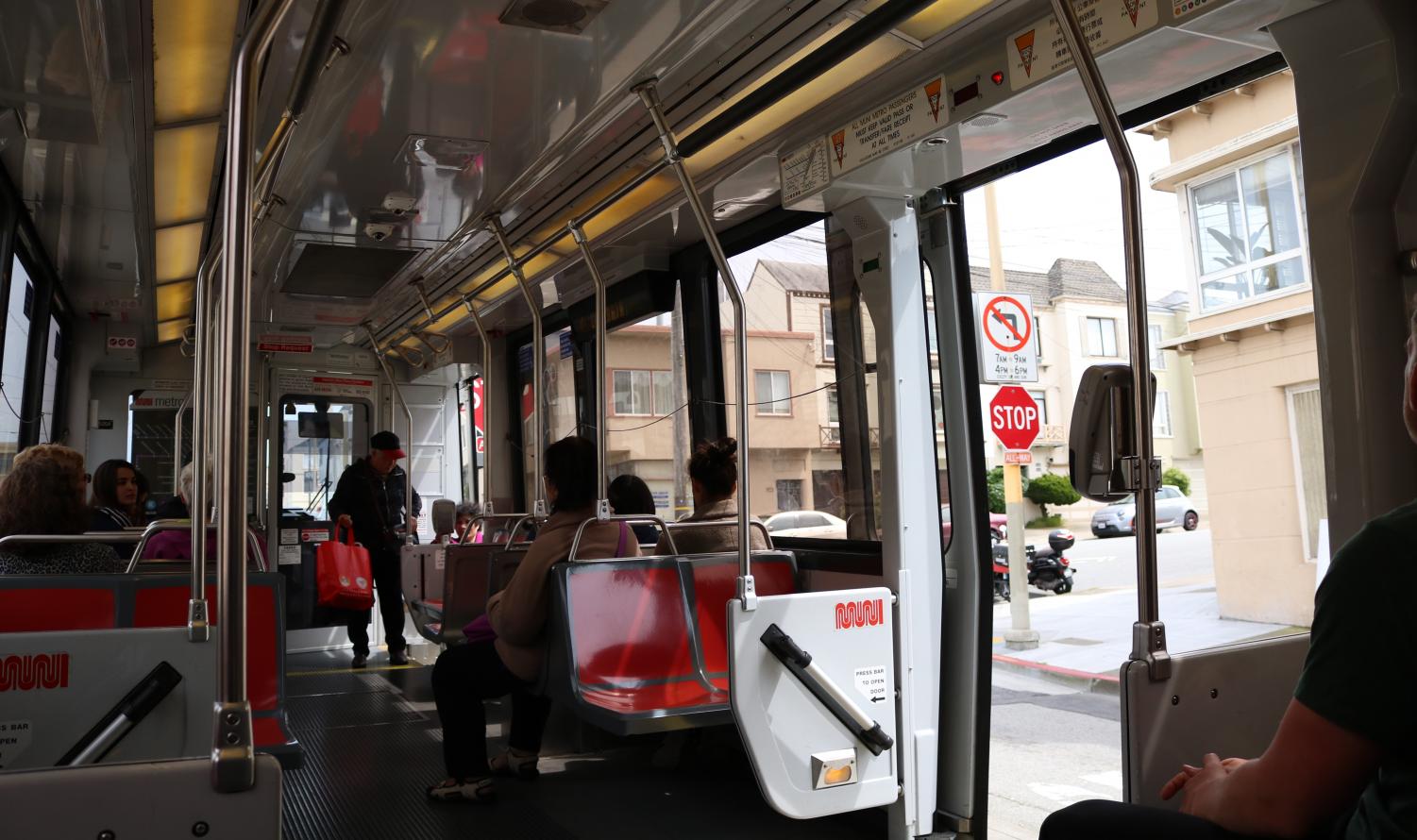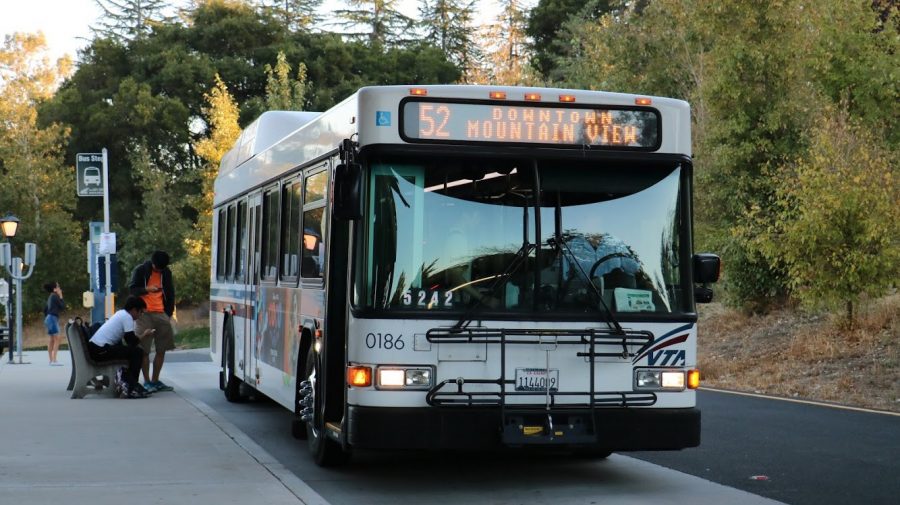VTA and Eco Pass at Foothill College
October 26, 2017
Driving to Foothill College, a campus far from any reasonable walking destinations, can easily be a costly and time-consuming nightmare. Attempting to find parking in the endlessly crowded outdoor lots can feel like an unpleasant game of cat and mouse — unequivocally resulting in tardiness. Fortunately, the Bay Area has a variety of alternative commuting options for those that either cannot or chose not to drive. Both Foothill and De Anza College are encircled by several of the Valley Transit Authority’s bus lines and are in close proximity to many Light Rail stations.
In the winter of 2014, Foothill College introduced an “Eco Pass” option for student Clipper Cards, mirroring a previously introduced program at De Anza. The fight for a reduced rate Clipper Card, a reloadable ticket used by transit agencies in the Bay Area, for students began in the Foothill-De Anza district in 2007, yet the project was only officially implemented at De Anza in 2011. Now, the program is once again at risk for cancellation or major restructuring.
Students at Foothill currently pay between 3 and 5 dollars per quarter in fees to allow the partnership between the VTA and Foothill to continue. The Eco Pass initiative provides students the ability to ride VTA bus and light-rail services 24 hours a day, 7 days a week at an unlimited rate for no additional cost.
Baba Saed, a Foothill student and frequent rider on the VTA bus system believes “[h]aving the quarterly fees is fine as long as it doesn’t become more expensive. If they’re raised, many people will struggle because they can’t afford it — people are working two jobs for tuition, books…we don’t need more stuff to pay for. The school should lower the costs, not make them worse on us.”
Due to the VTA’s recent price hikes across the district, the persistence of the present Eco Pass program is at risk. According to Camille Miller of San Jose Inside, “The collegiate Eco Pass is one of many transit fares that face adjustment as the VTA combats projected losses and prepares to implement a vast transit overhaul after the passage of Measure B, which was approved by county voters last year.”
On November 6th to November 9th, the student government of Foothill College will host a special election open to all registered students to decide between a series of options that will either modify the program or eliminate it entirely. According to ASFC President Danya Adib, “the options are to increase the quarterly rates for all students by $2.75, or eliminate the Eco Pass and have students that need a monthly [Clipper Card] pay $80 a quarter.” Students can vote on MyPortal to continue or terminate the program during the voting period.
Emily Aung, another student using public transit spoke of her experience commuting to the college before Eco Pass: “I think it’s a decent price to pay quarterly because without it I had to pay like $5 a day just to get home.” Others like Breanna Garcia believe “We should not pay quarterly at all because it should be provided to us each year whether we take the bus or not.”
The pass is also popular amongst students who don’t take public transit: Phyllis Tameli, who drives to class, says “I don’t mind. There’s lots of people that take the bus so we can help them.” ASFC members canvassing the student body also included concerns about increased car use and emissions leading to climate change as a reason to vote for the change.
The decision directing the fate of the Eco-Pass program will also determine the cultural direction Foothill students choose to move our college in. Will we continue maintaining programs supporting low-income students at universally increased prices, or cut those programs in favor of decreased accessibility?
**Update: The Eco Pass referendum passed on November 10th after 69% of students voted to accept fee increases. Official results were made public to The Script on November 16th.
Op-Ed: The Cost Analysis of Eco Pass
My day officially begins when I board a 7am Caltrain, get off 10 minutes later at the Mountain View Station, and spend another 15 minutes searching for coffee in Downtown Mountain View. My commute culminates in a 25 minute long ride on Bus 52 to Foothill, where I make my 8am often only by sprinting. Six to twelve hours later, I repeat the same routine for the total of two hours a day spent in commute. Taking public transit isn’t always fun, with its unpunctuality, lack of privacy, and time consuming nature, but it’s much better than my alternative: not attending Foothill at all.
I couldn’t drive when I was a high school senior, and Foothill, so far from where I live, was barely a real place to me. It was only until a friend pushed me to seriously consider Foothill that I bothered to research and see if transit options to Foothill even existed. A one minute Google Maps query proved that they did, and a following visit to Foothill’s website proved that it was affordable. It’s thanks to the Eco Pass I’m able to enjoy Foothill’s Honors Program — the only community college Honors Program within 40 miles of where I live — as well as other robust and often rare course offerings.
Without the Eco Pass, public transit costs almost as much as tuition. Students who routinely travel long distances to get to school and can’t afford to pay regular fare may have to stop attending Foothill altogether. The most affordable option (buying Eco Pass individually) still costs $940 more per year than the school provided Eco Pass*; this is equivalent to more than 15 units at Foothill education (that’s a bit more one quarter full time!), multiple transfer applications or a month of rent — all expenses that many college students already bear. We truly can’t afford to lose the Eco Pass.
*Eco Pass is $80/month for individuals. With 3 months in a quarter, the cost totals to to 240/quarter. For 4 quarters, the final total is $940.



Serena Lu
Dec 2, 2017 at 10:46 pm
Glad to hear the referendum passed! Increased accessibility to public transportation is great, both for folks who need it and for the environment.
Dom Digslard
Dec 2, 2017 at 9:37 pm
This article is a bit unclear. If I remember correctly, eco pass does not cover caltrain, so I’m not sure why the author mentions it? Is that $940 figure including caltrain or not including caltrain?
Morgan Douglas
Dec 2, 2017 at 9:36 pm
I personally think that it would be reasonable to keep Eco Pass because despite decreased fees, lower income students will overwhelmingly benefit from it…a small quarterly price is far superior to paying 5 dollars per day to commute between home, jobs, and school. Additionally, keeping Eco Pass increase incentive to use public transportation among students who wouldn’t have otherwise done so…which also lends itself to the broader idea of what cultural direction Foothill wants to move in.
Jenn Becker
Dec 2, 2017 at 9:31 pm
Did this pass? Can someone update this piece so we know if we will still have eco-pass? Without eco pass I won’t be able to get to class next quarter not to mention how many more cars (AND FUMES) this will add to the road.
Brian Gestof
Nov 1, 2017 at 12:13 pm
Foothill is seriously considering taking away Eco-Pass?? Thats completely nonsensical. Not only is it an EXTREMELY heavy financial burden to own a car, but all the people riding VTA are avoiding increasing damage to our enviorment!!
Abdula Supreme
Oct 31, 2017 at 3:03 pm
Damn this a good article.